In 2020 there were 457 reported marine incidents that involved a consequence to the vessel. This is down slightly from 468 incidents in 2019 The most common vessel consequence was contact (with an object), which accounted for 27.4% of vessel consequences and 16.5% of total reported incidents. This was followed by collisions, which accounted for 21.7% of vessel consequences and 13.1% of total reported incidents. Groundings, accounting for 13.1% of vessel consequences and 7.9% of reported incidents. Contacts, Collisions and Groundings were also the top three occurring vessel consequences in 2019.
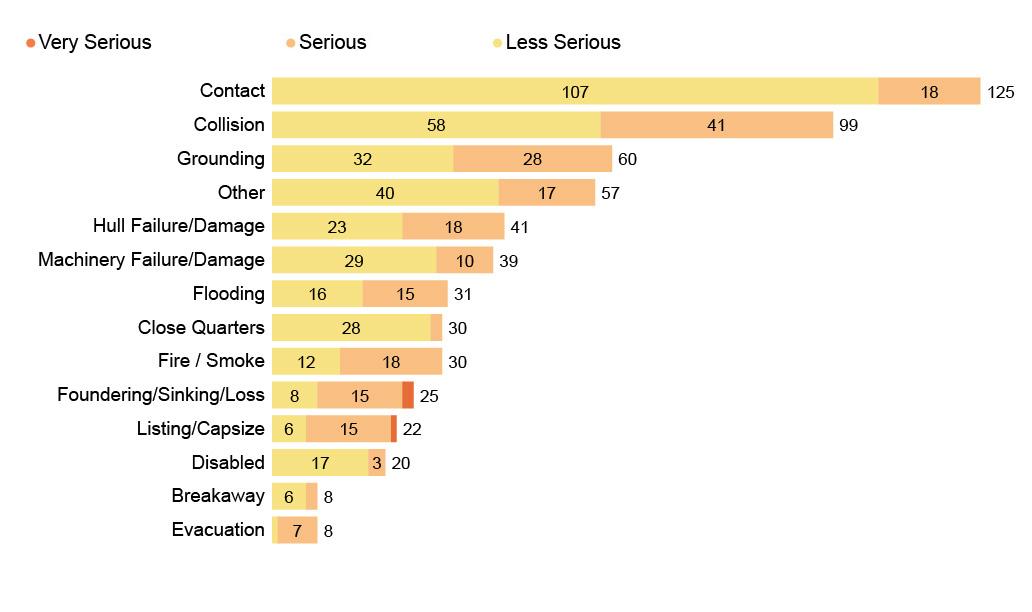
Operational
Most (75.7%) Operational incidents were related to control and navigation of the vessel. Control and/or navigation issues represents 42.7% of all incidents reported in 2020 compared to 35.6% of all incidents in 2019. Control and/or navigation operational shortfalls also resulted in 56.7% of the vessel consequences (457 incidents).
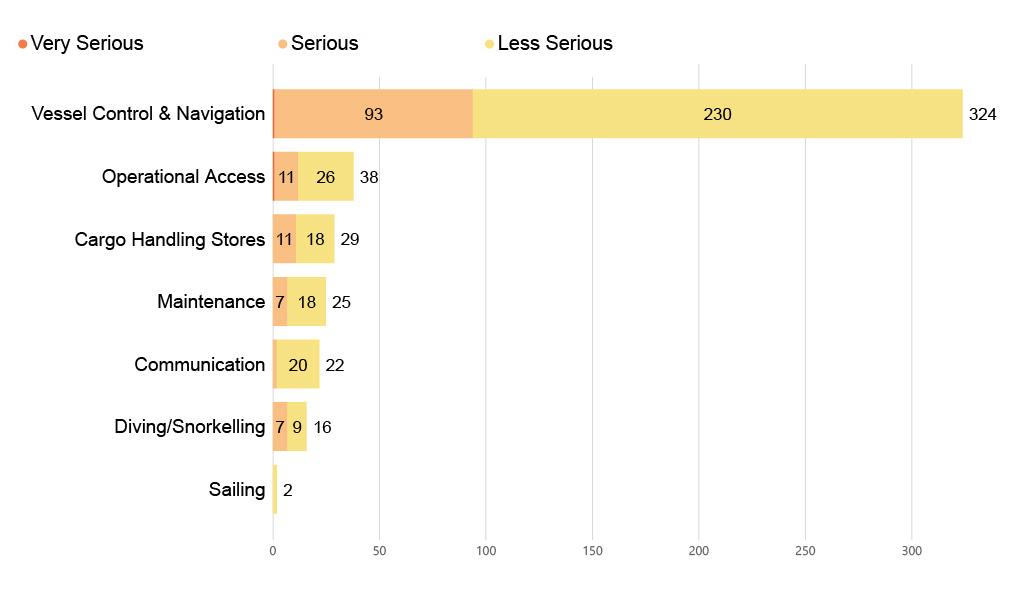
Operational access, which involves the movement of people on and around the vessel, was the second most common operational shortfall in 2020. This frequently resulted in the injury of a crew member or passenger.
Technical
In 2020, there were 176 reported incidents that involved a technical failure, which represents 23.2% of total reported incidents. The most frequently reported technical issues were related to power propulsion and steering (51%), engineering systems (16.5%) and vessel systems (14.5%).
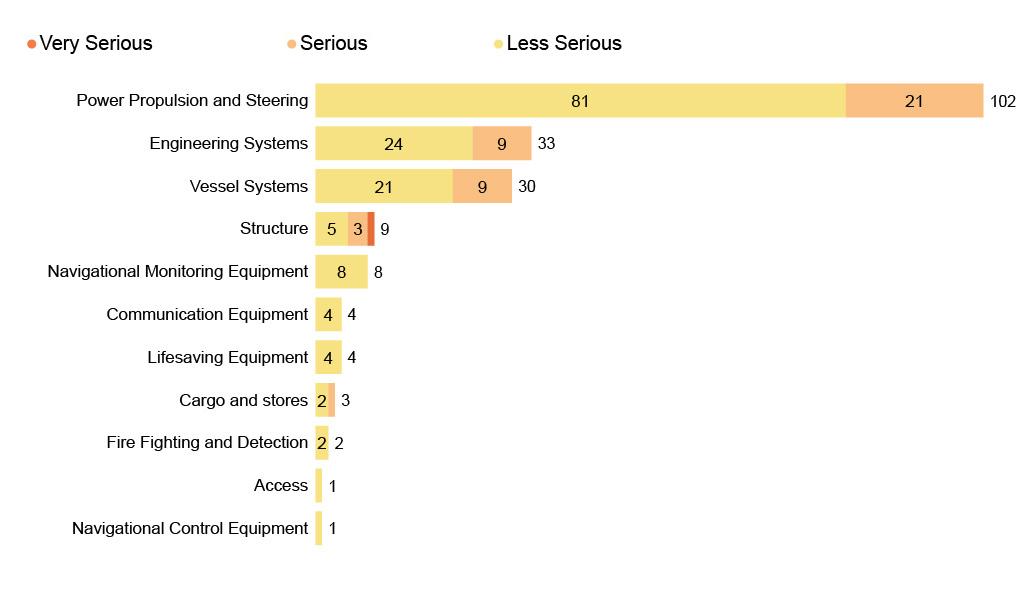
Figure 22 presents the top 10 most frequently occurring equipment/system failures related to the above technical issues. The most frequently reported were related to the main engine/gearing, which represents 50% (51) of the power propulsion and steering failures.

Environmental conditions
In 2020, there were 105 reports in which weather and/or water conditions had a direct impact on the vessel and/or personal safety. This is 13.9% of reported incidents. 43.8% of these were classified as very serious and serious.
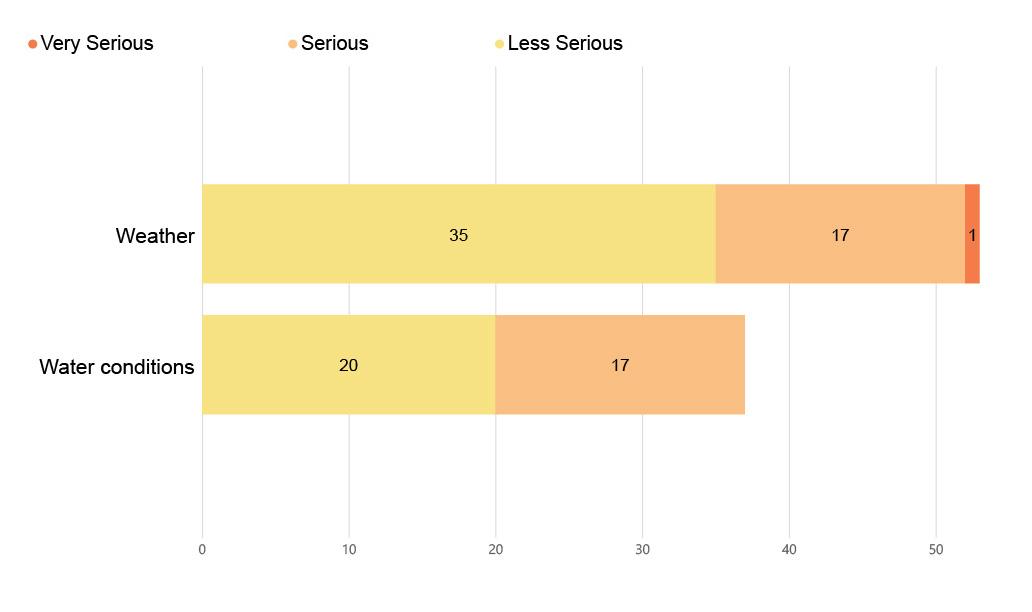
As shown in Figure 24, these conditions resulted in collisions, groundings, contact (with an object) and crew injuries amongst others.
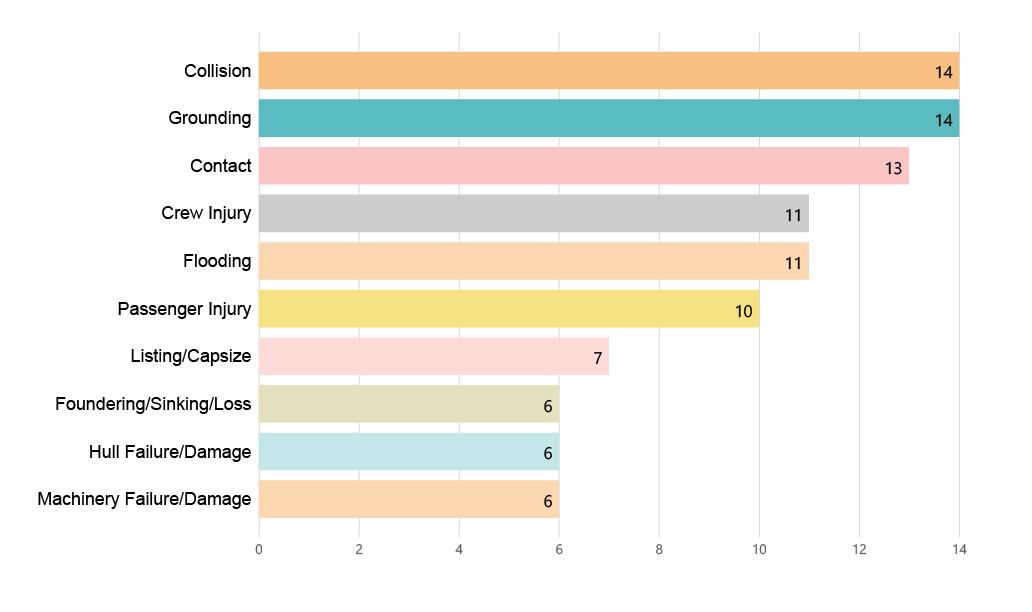
The consequences to vessels and to people onboard that resulted from weather and water conditions highlight the importance of checking weather and tides and adjusting plans and operations accordingly.
Checking weather and tides should be part of the vessel’s safety management system.
The Bureau of Meteorology's marine forecasts and warnings provides information on five vital checks which should be considered as part of trip planning: Warnings, Weather, Winds, Waves, and Tides.
Head to the Bureau’s website for more information on marine weather.